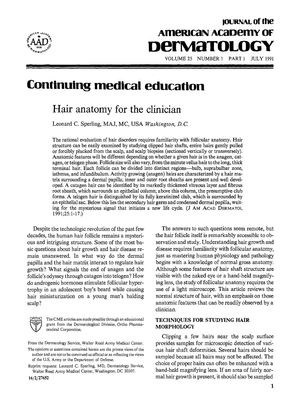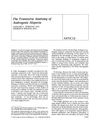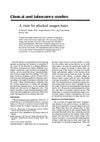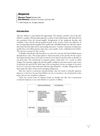Hair Anatomy for the Clinician
July 1991
in “
Journal of The American Academy of Dermatology
”
hair follicle anatomy hair disorders hair morphology microscopic examination hair pulls scalp biopsies hair growth cycle anagen catagen telogen vellus hairs terminal hairs puberty balding hair shaft plucking transverse sections telogen count hair anatomy hair cycle hair phases hair examination hair biopsy hair plucking

TLDR Understanding hair follicle anatomy helps diagnose hair disorders.
In the 1991 article, Leonard C. Sperling provided a comprehensive overview of hair follicle anatomy, detailing the importance for clinicians in diagnosing hair disorders. The article covered methods for examining hair morphology, including microscopic examination, hair pulls, and scalp biopsies, and described the hair growth cycle's phases (anagen, catagen, and telogen). It highlighted that anagen hairs are metabolically active and can be fine vellus hairs or thick terminal hairs, with changes occurring due to factors like puberty and balding. The paper also discussed the structural details of hair follicles, the layers of the hair shaft, and the effects of plucking on hair anatomy, noting that plucking can create artifacts that may be confused with abnormalities. Additionally, the document explained the structural changes during the hair cycle, the use of transverse sections in scalp biopsies, and the significance of the telogen count as a diagnostic tool, stating that more than 25% of hairs in telogen is likely abnormal.





